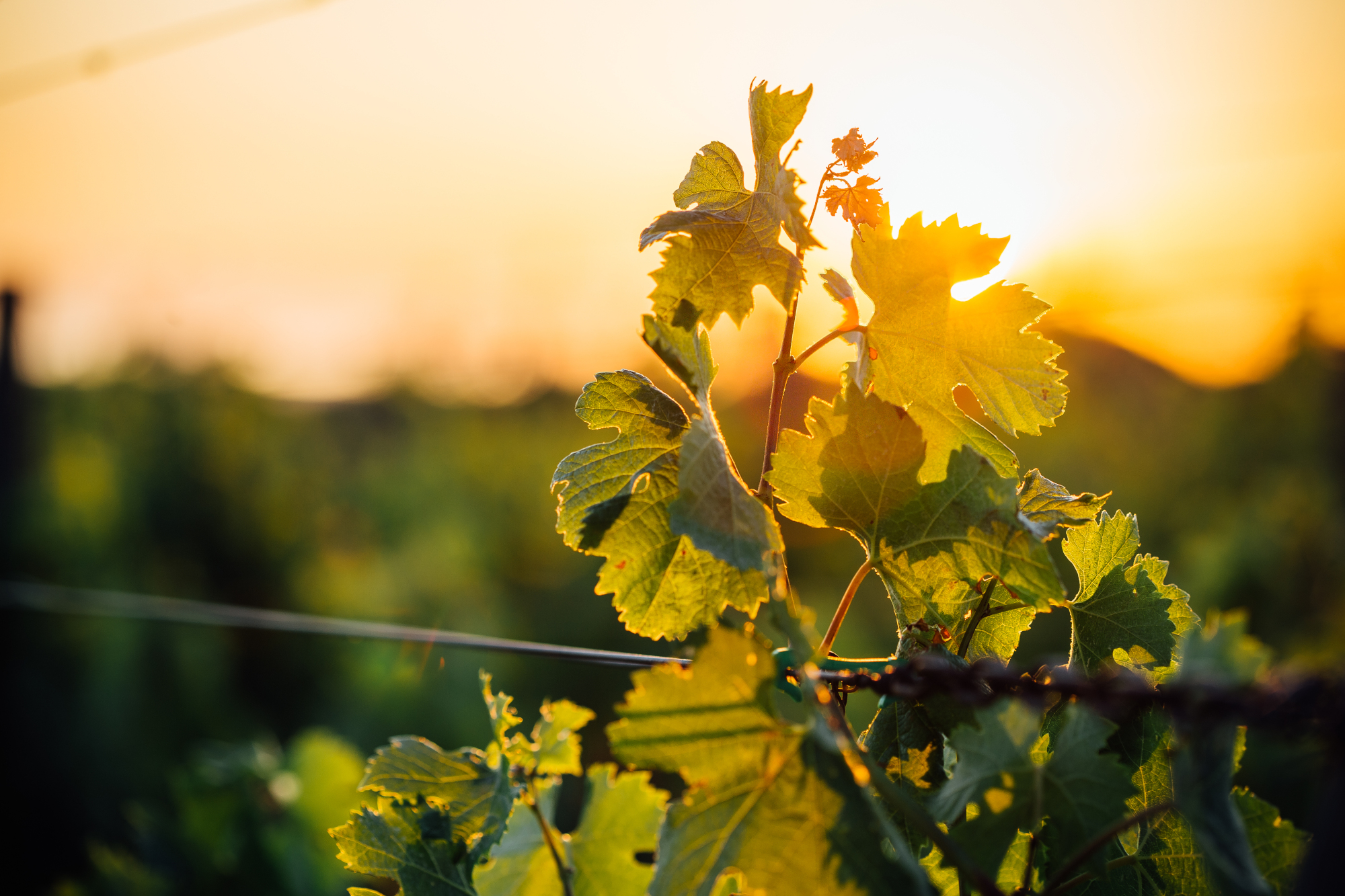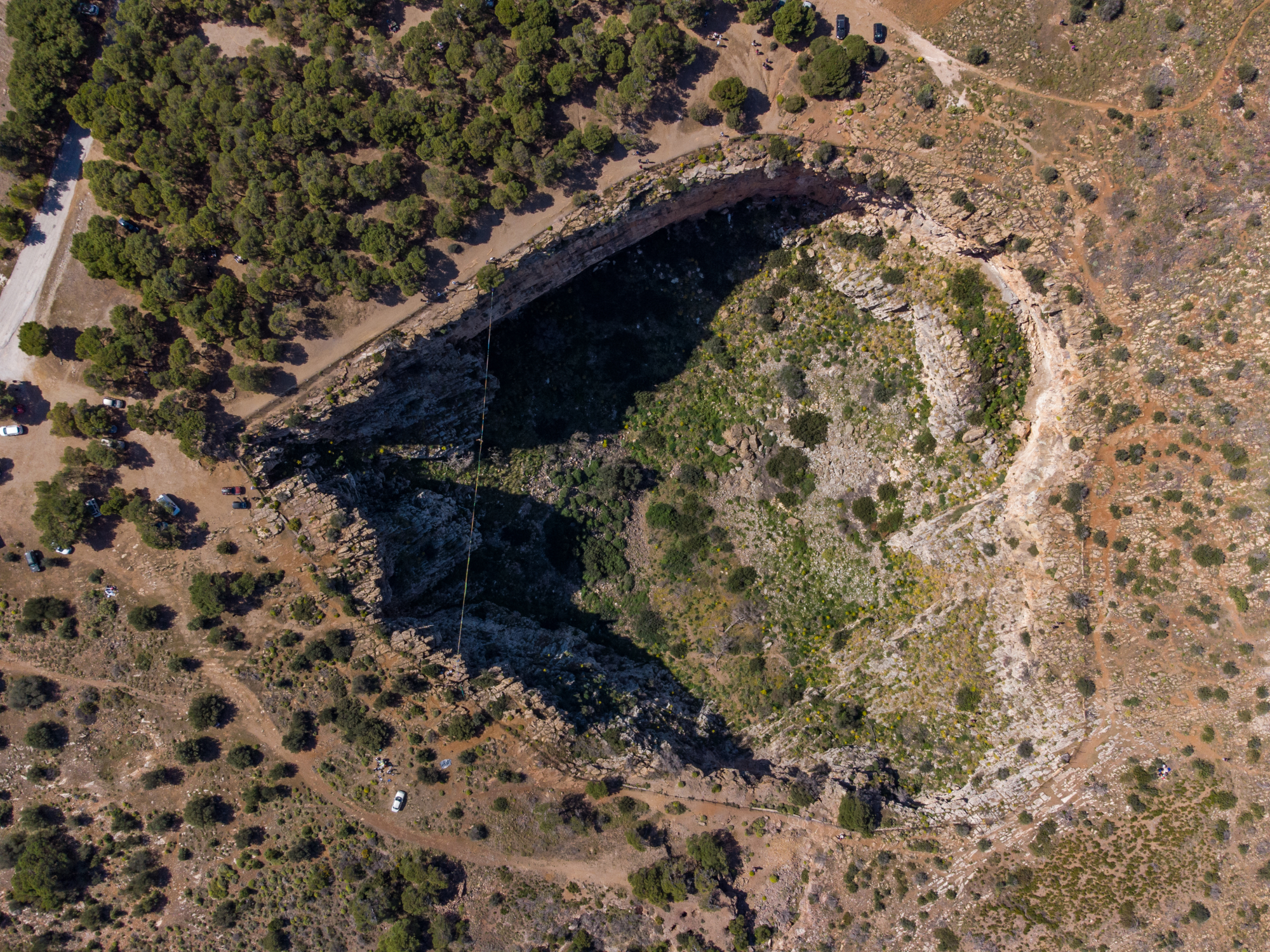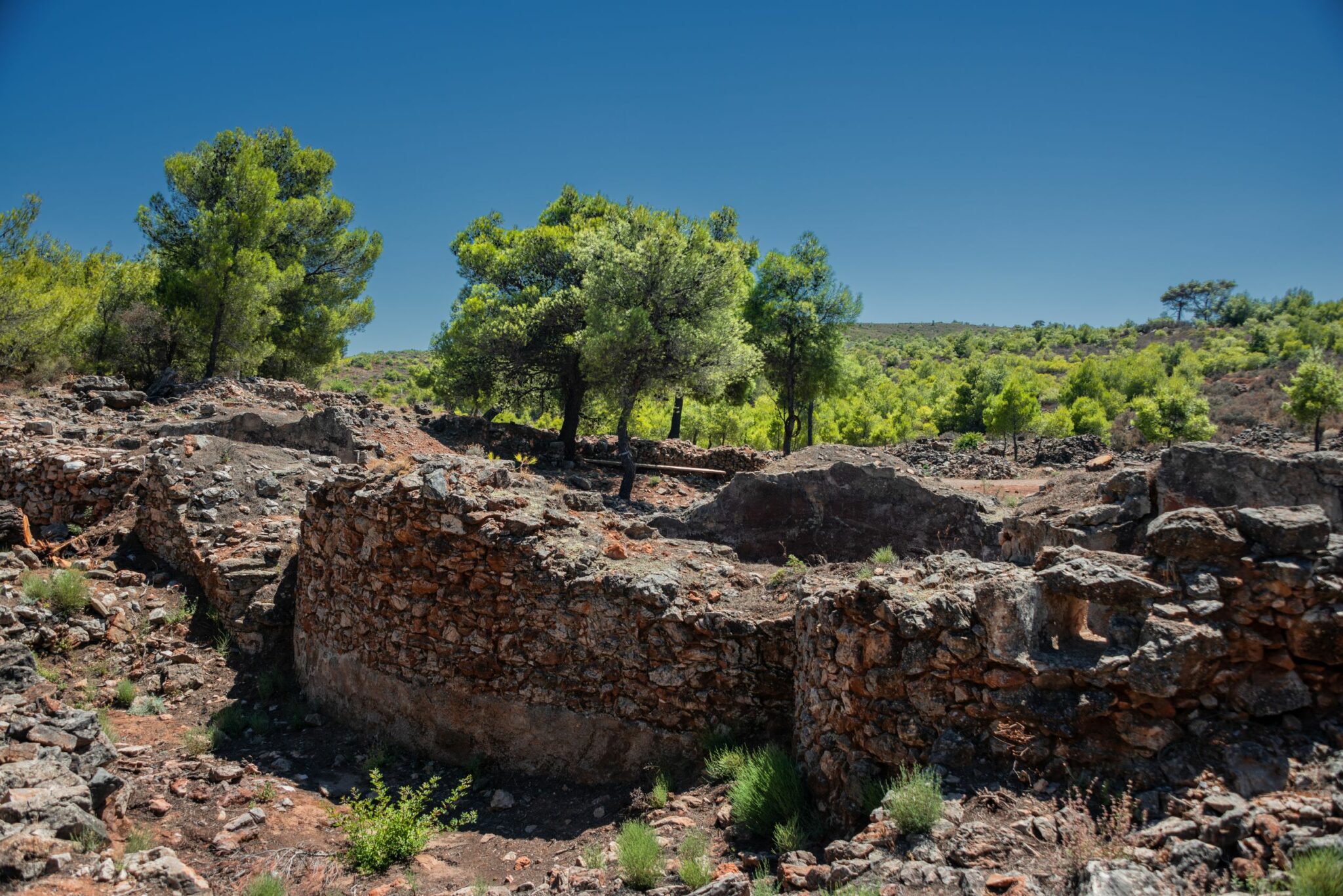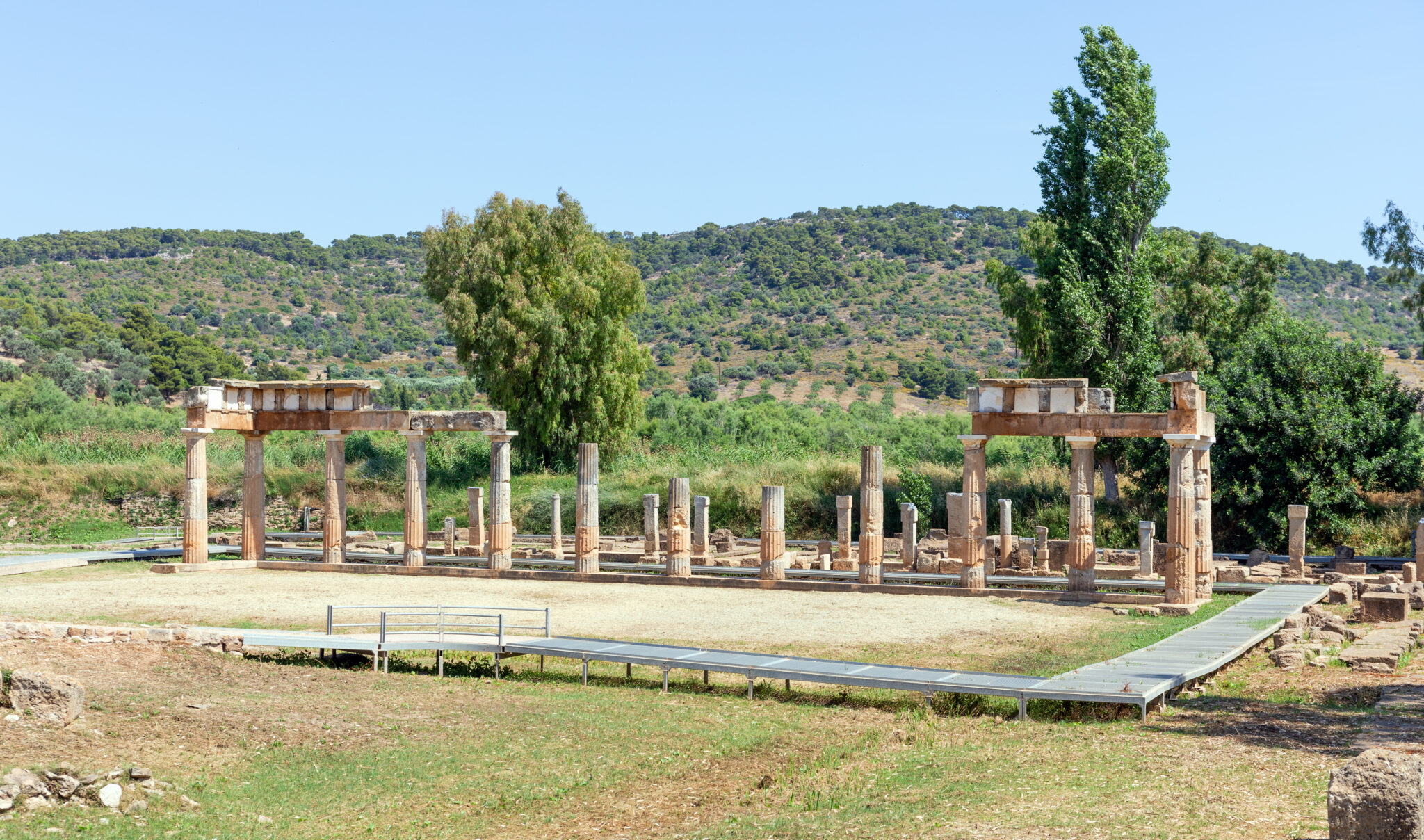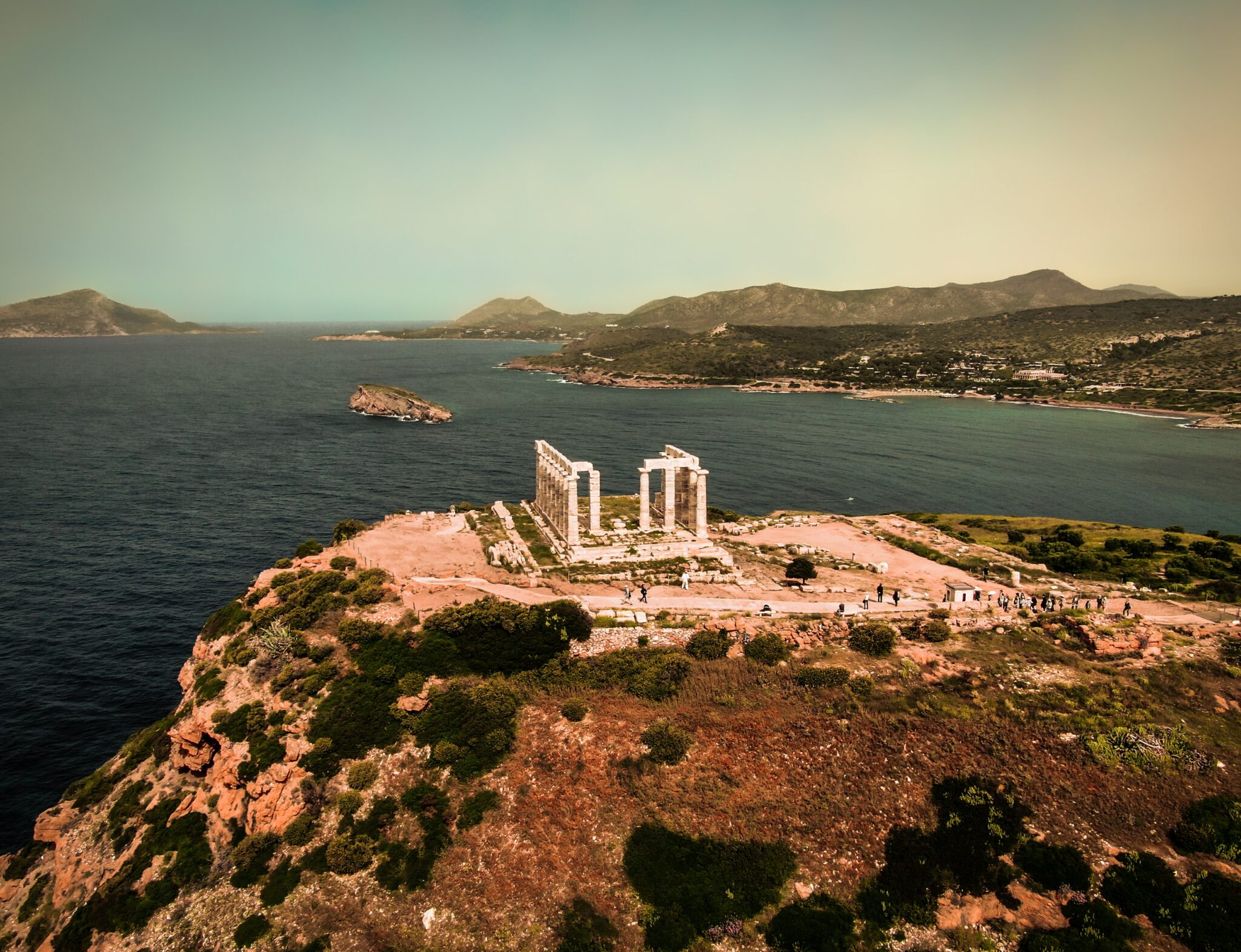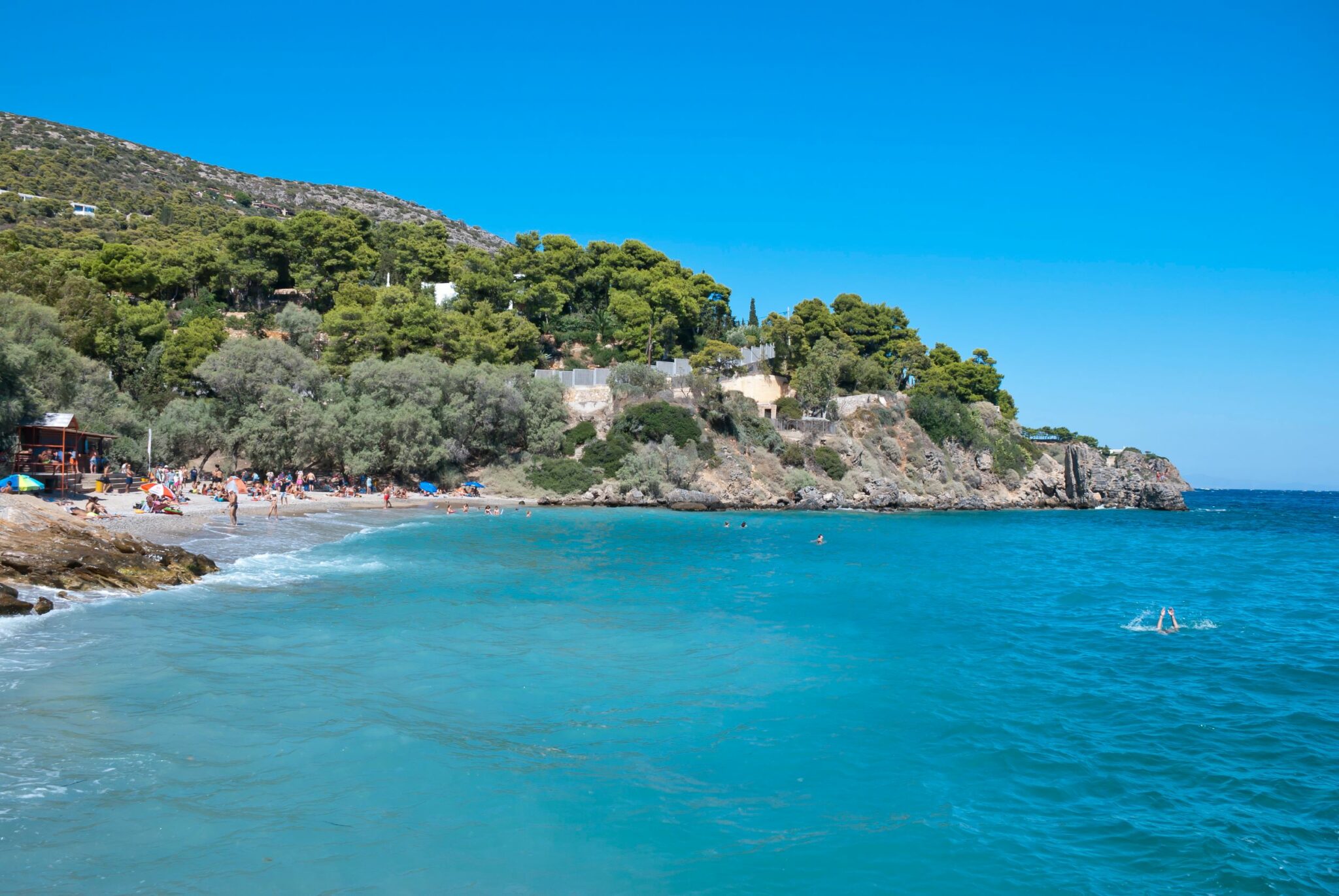Wine enthusiasts visiting Mesogeia can combine visits to wineries with tours archaeological sites, museums and cultural centres, enjoy refreshing walks in nature, relax on picturesque beaches and be introduced to traditional Greek gastronomy in traditional tavernas. In the area of Koropi, there have been many archaeological artifacts found that reveal the area was inhabited since prehistoric times (3,000 BC). Prehistoric settlements were discovered in the area where the Koropi Health Centre is located today, in Kondra Gliate, Christos Castle and elsewhere.
Most noteworthy are the sanctuaries of the 5th century BC, such as those of Zeus Obrios and Apollo Proopsios, located on a plateau of Prophet Elias of Mt Ymittos. In Filiati (3 km west of Koropi) there is the “Well of Pisistratos”, dating back to over 2,500 years ago. From the Byzantine era, there are churches such as that of the Virgin Mary of Koursalas in the town of Koropi, with wonderful icons by Georgios Markos, in 1732.
Lavrion was known for its silver mining, and the precious metal was the main source of funding for the city-state of Athens. Mining began in 3,000 BC, was resumed in 1864 AD and finally ceased in 1992.
Attractions include neoclassical buildings, such as the offices of the first mining company in the port, which today house the Town Hall, restored historical industrial buildings housing cultural activities, the Technological Cultural Park and the Archaeological and Mineralogical museums.
A stroll through the charming district around Agios Andreas with its historic detached houses transports visitors to the metallurgical-industrial Lavrion of long ago, while on the industrial pier you’ll find several lovely tavernas. North of Lavrio is the ancient theatre of Thorikos, which was built in the 5th century B.C. Thorikos was founded by Cecrops and in ancient times was one of the most important cities of Attica. Also impressive is the ore purification and washing workshop, consisting of a complex system of tanks and pipes, which was in use until the end of the 5th century BC.
Southeast of Keratea rises Ovriokastro. From its highest point (315m) one can observe the mountains of northern Lavreotiki, almost the whole zone up to the bay of Anavyssos, the Saronic Gulf, a large part of the Mediterranean Sea, and the southern Evian Gulf. Great archaeological finds from the Final Neolithic period (3,500-3,000 BC), the Early Helladic I (3,000-2,800) and the Middle Helladic (2,000-1,600) have been found there, all of which are housed in the Lavrion Archaeological Museum.
In Vravona there is the impressive Temple of the goddess Artemis which was and remains one of the most important sacred and ancient sites in Attica, while at the end of the Sounion peninsula at the southernmost point of Attica, is the Temple of Poseidon in a fortress that protected the coast of Attica from the corsairs and barbarians.
In Peania you’ll find the Vorres Museum, donated by the Vorres family to the Greek state. The museum was founded in 1983 and is a timeless museum of folk and contemporary art. Its facilities include over 6,000 exhibits covering a wide period of Greek history and art. It also includes two houses from the Ottoman period, together with a stable and a wine press.
To the southwest of Keratea, on the south side of Mount Keratovouni and at an altitude of 548 m, the Keratea cave opens up. It is a two-level cave divided into three long parallel sections by fine columns, stalactites and stalagmites. The small water pools with clear waters enhance the spectacular appeal of the cave. One of the caves was visited by Lord Byron and is thus called “Byron’s Cave”. The ‘Cave of Kitsos’ owes its name to a legendary robber named Kitsos who used it as a hideout with his gang of six. Visitors can tour the lush green National Park of Sounion and enjoy diving at attractive beaches such as “Tsonima” in Keratea, “Erotospilia” and “Avlaki”, “Chamolia” in Vravona, and “Kavatza” in Kato Sounion.



